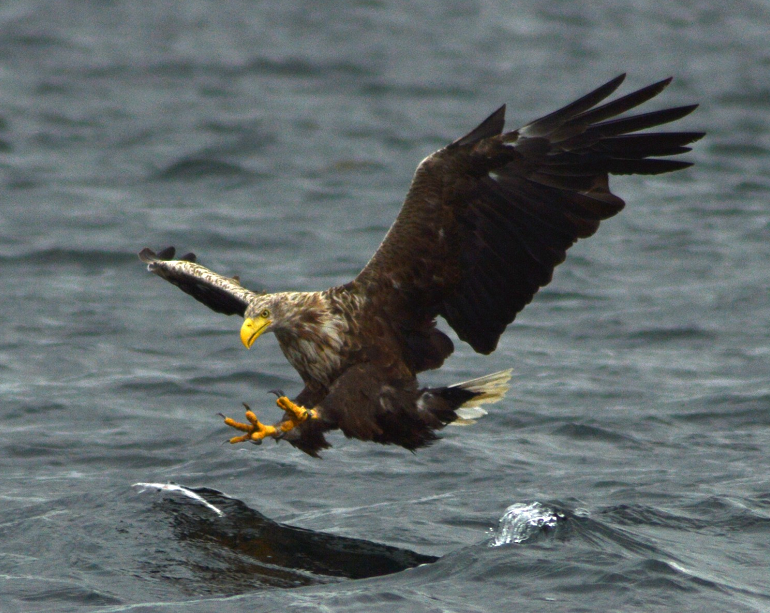Hopes have soared for the future of the UK’s largest bird of prey, as the 100th breeding pair of white-tailed eagles has been spotted nesting on Orkney.
The milestone is thanks to two birds on Hoy – the first of their species to nest in Orkney in 142 years.
It marks a remarkable comeback for the creatures – also known as sea eagles, or by the nickname, “the flying barn door”, a nod to their massive wingspan.
The predators, which are widespread across northern Europe and Russia, went extinct in the UK in the early 20th century due to widespread persecution from illegal poachers.
Breeding populations were common across all of Britain in the 1800s, however by 1900 the only remaining nests were in Scotland, and the last native bird was shot dead in Shetland in 1918.
Their resurgence began in 1975 when a pair of young eagles from Norway were re-introduced to Rum.
Over the 40 years since, careful conservation efforts have resulted in the birds spread across much of Scotland’s west coast – most notably Mull – as well as Orkney and Shetland.
More recently a second phase of the reintroduction programme has begun on the east coast.
The Hoy pair have been seen every spring and summer since 2013, but this year marks their first attempt at nesting.
Their presence has particular resonance in Orkney. Before they became extinct in the UK, the species enjoyed great cultural significance in the islands, which can be seen at the neolithic “Tomb of the Eagles” on South Ronaldsay, which was found to contain the bones of 100 people and 14 white-tailed eagles.
Stuart Housden, director of RSPB Scotland, said: “The 100th breeding pair marks a huge milestone for the re-introduction of white-tailed eagles, and to reach it in this important anniversary year for the programme makes it even more special.
“The success of bringing white-tailed eagles back to Scotland over the last 40 years owes a great deal to the partners involved, as well as the support of Police Scotland, landowners, farmers, local community groups and organisations, and to Norway who gifted the young eagles.
“It’s fantastic to see how these magnificent birds have captured the public’s imagination and the sight of a white-tailed eagle soaring in the Scottish sky is no longer a thing of the past.”
